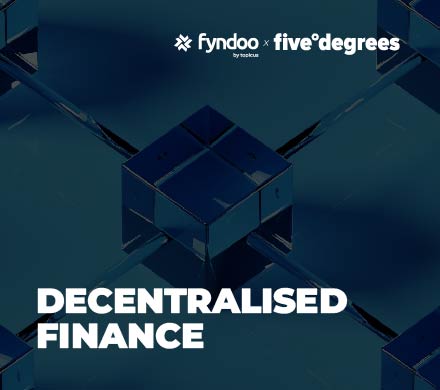Published on: February 19, 2024

Be the first to read our latest news, and get exclusive content.
In the ever-evolving world of finance, a new player has emerged with the potential to redefine the very foundations of banking and transactions: Decentralised Finance, or DeFi. This innovative trend is not just a fleeting phenomenon but a transformative force reshaping how we think about financial services.
DeFi was first coined in 2018, but its roots can be traced back to the creation of Bitcoin in 2009. However, in Ethereum's launch in 2015, DeFi truly began to flourish. Ethereum's smart contracts enabled the creation of complex financial services that are programmable and self-executing, laying the groundwork for a new financial ecosystem.
Decentralised Exchanges (DEXs) like EtherDelta popped up in 2016, followed by projects like MakerDAO and Compound. These milestones and the advent of liquidity mining in 2020 have propelled DeFi into the spotlight. By 2023, the DeFi landscape saw significant developments, including cross-chain communication and increasing institutional involvement, with the Total Value Locked (TVL) in DeFi protocols reaching billions of dollars.
At the heart of DeFi lies blockchain technology and smart contracts. These contracts encode the terms of an agreement into code, allowing for transactions that are not only automated but also secure and transparent. Ethereum, Binance Smart Chain, and other blockchain platforms provide the infrastructure upon which DeFi applications are built.
Decentralised autonomous organisations (DAOs) and DeFi protocols use this technology to validate transactions, ensuring the DeFi ecosystem is secure and transparent. The interoperability of blockchain networks also plays a crucial role in enhancing the scalability and efficiency of DeFi services.
Recent market analysis predicts that by 2032, the DeFi market could reach a staggering USD 601 billion, growing at an annual rate of 46.1%. This growth is driven by the demand for decentralised financial platforms and accessible to anyone with a cryptocurrency wallet and internet connection. DeFi's model allows for the seamless trading and movement of assets, free from the constraints and fees of traditional banking.
As DeFi continues to evolve, it promises to address challenges such as high transaction fees and slow confirmation times by integrating advanced technologies like oracles and Layer 2 scaling solutions. However, the disruptive potential of DeFi also brings regulatory challenges to the forefront. Finding a balance between fostering innovation and ensuring regulatory compliance to maintain the ecosystem's sustainable growth is vital.
Moreover, the expansion of DeFi into areas such as decentralised identity and insurance is expected to broaden its applications. Yet, the ecosystem must also navigate risks associated with smart contract vulnerabilities, market volatility, and regulatory uncertainties.
DeFi is not just a trend; it's a vision of a more inclusive and decentralised financial future. As the ecosystem matures, collaboration with regulators and addressing challenges will be critical to its sustained growth. The transformative power of DeFi is undeniable, and it demands the attention of regulators, stakeholders, and users alike. It's an exciting time for financial innovation, and DeFi is at the forefront, leading the charge towards a more accessible and equitable financial world for all.